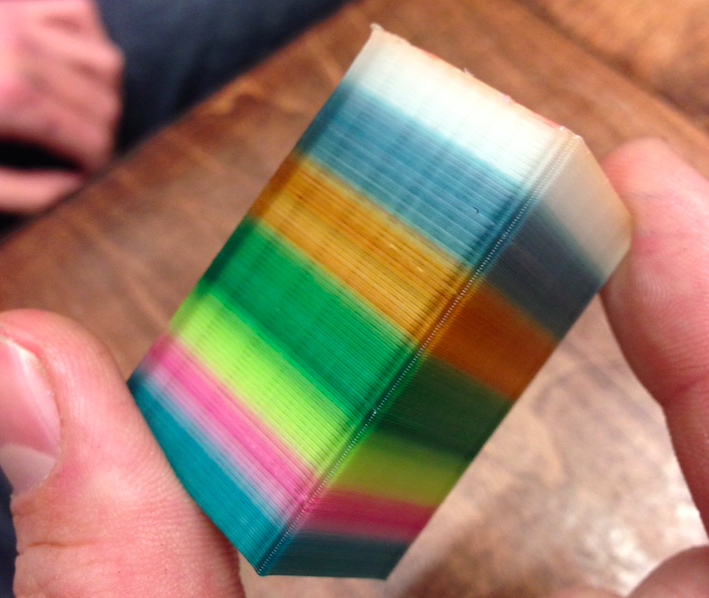
A report in GigaOm touts a “a sub-$100 device that upgrades desktop 3D printers to print in a full rainbow of colors”. But is this actually true?
We’re not so certain. GigaOm says:
Printing in full color is generally a privilege limited to professional and high-end consumer 3D printers. Spectrom could change that.
“Spectrom” is the name of a device created by University of Wisconsin-Madison students Cédric Kovacs-Johnson and Charles Haider, which is intended to be added to common filament-based personal 3D printers.
How does it work?
As we understand it, the device simply adds colorant when filament is melted and ready to extruder. This permits a printer to use only white (or natural) filament and still be able to extruder almost any color. It’s a lot simpler than the BotObjects ProDesk3D that uses six colored filaments instead.
It’s a good idea, but it does not produce a “full color 3D printer”. It creates a device that can switch colors layer by layer, able to print rainbowy objects such as the image above. It could also switch colors print-by-print, meaning you could produce a pink print followed by an orange print without having to switch filament, for example.
Good properties, for certain, but not full color. We believe “full color” should mean the ability to print ANY color ANY time. You should be able to 3D print full image textures on the surface of your objects – a face with skin, for example.
The Spectrom can’t really do that. Oh, perhaps it could tediously switch colors in mid-print constantly to produce, say, a simple color gradient within a single layer, but we suspect the printer would spend a significant amount of time purging old color before the new color reliably emerges from the extruder. For each differently-colored volume. Ouch!
Finally, true full-color 3D printing is no longer ultra-expensive, as 3D Systems announced the CubeJet, which can print full RGB colors at a price of less than USD$5,000. A bit more than a personal 3D printer price, but not by much. Less than two MakerBots.
Via GigaOm

